Stress Analysis of Ice Layers on Fan Rotor Blades in Aeroengines
Abstract
:1. Introduction
2. Numerical Methods
2.1. Calculation of Local Collection Coefficient
2.2. Calculation of Ice Accretion on Blade
2.3. Analysis of Internal Ice Stresses
3. Numerical Simulation Results
3.1. Modeling and Validation
3.1.1. NASA Rotor 67 Flow Field Validation
3.1.2. Ice Accretion Model Validation
3.2. Distribution of Ice Stress along Chordwise and Spanwise Directions
3.2.1. Icing Morphology
3.2.2. Analysis of Stresses in Ice along the Chord
3.2.3. Analysis of Stresses in Ice along Span
3.3. Relationship between Stress within Ice and Rotor Speed
4. Conclusions and Future Prospects
- (1)
- The magnitude and specific distribution characteristics of the stresses within the ice accretion are significantly influenced by the ice geometry, contact surface geometry, and centrifugal force. As the icing duration increases, the ice accretion on the blade surface thickens, resulting in higher stress and an expansion of the high-stress regions, with a more pronounced stress concentration. From the blade root to the blade tip, the stress within the ice accretion generally shows an increasing trend, with an enlarged area of high-stress regions. The maximum principal stress and the distribution area of the high-stress regions on the suction side of the ice accretion are much larger than those on the pressure side. Additionally, the stress decreases gradually from the contact surface outward, indicating a tendency for the ice to fracture first at the contact surface, potentially leading to ice shedding or breaking.
- (2)
- The maximum principal stress gradient is significant at the leading edge of the ice accretion. The locations of the maximum principal stress at various blade heights are found to be approximately 1% to 4% from the leading edge on the suction side at the contact surface between the ice and the blade.
- (3)
- The preliminary inferences suggest that the ice accretion on the blade surface tends to crack at 75%, 40%, and 20% of the blade height on the suction side at 80%, 90%, and 100% of the design rotational speeds, respectively.
- (4)
- As the rotational speed decreases, the maximum stresses within the ice accretion exhibit a decreasing trend, with the area of high-stress regions gradually reducing.
Author Contributions
Funding
Data Availability Statement
Conflicts of Interest
References
- Fortin, G.; Perron, J. Ice Adhesion Models to Predict Shear Stress at Shedding. J. Adhes. Sci. Technol. 2012, 26, 523–553. [Google Scholar] [CrossRef]
- Messinger, B.L. Equilibrium Temperature of an Unheated Icing Surface as a Function of Air Speed. J. Aeronaut. Sci. 1953, 20, 29–42. [Google Scholar] [CrossRef]
- Hayashi, R.; Yamamoto, M. Modelling of ice shedding phenomenon for engine fan icing. Trans. JSME 2014, 80, 815. [Google Scholar] [CrossRef]
- Chen, Y.; Dong, W.; Wang, Z.; Fu, L. Numerical Simulation of Ice Shedding From a Fan Blade. In Proceedings of the ASME Turbo Expo 2015: Turbine Technical Conference and Exposition, Montreal, QC, Canada, 15–19 June 2015. [Google Scholar] [CrossRef]
- Li, L.; Hu, H. An Experimental Study of Dynamic Ice Accretion Process on Aero-engine Spinners. In Proceedings of the 55th AIAA Aerospace Sciences Meeting, Grapevine, TX, USA, 9–13 January 2017. [Google Scholar] [CrossRef]
- Tian, L.; Hu, H.; Hu, H. Quantification of the Ice Structures Accreted over the Surfaces of Rotating Aero-Engine Fan Blades. In Proceedings of the AIAA AVIATION 2022 Forum, Chicago, IL, USA, 27 June–1 July 2022. [Google Scholar] [CrossRef]
- Chen, G.; Yang, K.; Wang, L.; Kong, W.; Wang, F. Test of ice shedding on turbofan engine blade in refrigeratory environment. J. Beijing Univ. Aeronaut. Astronaut. 2018, 44, 2106–2114. (In Chinese) [Google Scholar] [CrossRef]
- Ning-li, C.H.E.N.; Jian-min, D.U.; Hong-hu, J.I.; Ya-ping, H.U.; Yong-qing, Y.U.A.N. Numerical Study of Effects of Centrifugal Force on Ice Accretion on a Rotor Blade. J. Propuls. Technol. 2020, 41, 1314–1323. [Google Scholar] [CrossRef]
- Chorin, A.J. Numerical solution of the Navier-Stokes equations. Math. Comput. 1968, 22, 745–762. [Google Scholar] [CrossRef]
- Matsuura, T.; Suzuki, M.; Yamamoto, M.; Shishido, S.; Murooka, T.; Miyagawa, H. Numerical simulation of ice accretion phenomena on rotor blade of axial blower. J. Therm. Sci. 2012, 21, 322–326. [Google Scholar] [CrossRef]
- Launder, B.E.; Spalding, D.B. The numerical computation of turbulent flows. Comput. Methods Appl. Mech. Eng. 1990, 3, 269–289. [Google Scholar] [CrossRef]
- Bourgault, Y.; Habashi, W.G.; Dompierre, J.; Boutanios, Z.; Bartolomeo, W.D. An Eulerian approach to supercooled droplets impingement calculations. In Proceedings of the 35th Aerospace Sciences Meeting and Exhibit, Reno, NV, USA, 6–9 January 1997. [Google Scholar] [CrossRef]
- Hu, L.; Zhu, X.; Hu, C.; Chen, J.; Du, Z. Calculation of the Water Droplets Local Collection Efficiency on the Wind Turbines Blade. J. Energy Resour. Technol. 2017, 139, 051211. [Google Scholar] [CrossRef]
- Zheng, Y.; Zhang, F.; Wang, D.; Li, S. Numerical and Experimental Study of Ice Accretion Process and Ice Protection on Turbo-Fan Engine Splitter. In Proceedings of the ASME Turbo Expo 2019: Turbomachinery Technical Conference and Exposition, Phoenix, AZ, USA, 17–21 June 2019. [Google Scholar] [CrossRef]
- Ahn, G.B.; Jung, K.Y.; Myong, R.S.; Shin, H.B.; Habashi, W.G. Numerical and experimental investigation of ice accretion on rotorcraft engine air intake. J. Aircr. 2015, 52, 903–909. [Google Scholar] [CrossRef]
- Ding, L.; Chang, S.; Yi, X.; Song, M. Coupled thermo-mechanical analysis of stresses generated in impact ice during in-flight de-icing. Appl. Therm. Eng. 2020, 181, 115681. [Google Scholar] [CrossRef]
- Gammon, P.H.; Kiefte, H.; Clouter, M.J. Elastic constants of ice samples by BrillouinSpectroscopy. J. Glaciol. 1980, 25, 159–168. [Google Scholar] [CrossRef]
- Petrovic, J.J. Review Mechanical properties of ice and snow. J. Mater. Sci. 2003, 38, 1–6. [Google Scholar] [CrossRef]
- Fortin, G.; Beisswenger, A.; Perron, J. Centrifuge Adhesion Test to Evaluate Icephobic Coatings. In Proceedings of the AIAA Atmospheric and Space Environments Conference, Toronto, ON, Canada, 2–5 August 2010. [Google Scholar] [CrossRef]
- Duval, P.; Schulson, E.M. Creep and Fracture of Ice; Cambridge University Press: Cambridge, UK, 2009. [Google Scholar] [CrossRef]
- Sommerwerk, H.; Horst, P. Analysis of the mechanical behavior of thin ice layers on structures including radial cracking and de-icing. Eng. Fract. Mech. 2017, 182, 400–424. [Google Scholar] [CrossRef]
- Dong, W.; Ding, J.; Zhou, Z.X. Experimental Study on the Ice Freezing Adhesive Characteristics of Metal Surfaces. J. Aircr. 2014, 51, 719–726. [Google Scholar] [CrossRef]
- Strazisar, A.J.; Powell, J.A. Laser Anemometer Measurements in a Transonic Axial Flow Compressor Rotor. ASME. J. Eng. Power 1981, 103, 430–437. [Google Scholar] [CrossRef]
- Shin, J. Characteristics of surface roughness associated with leading-edge ice accretion. J. Aircr. 1994, 33, 316–321. [Google Scholar] [CrossRef]
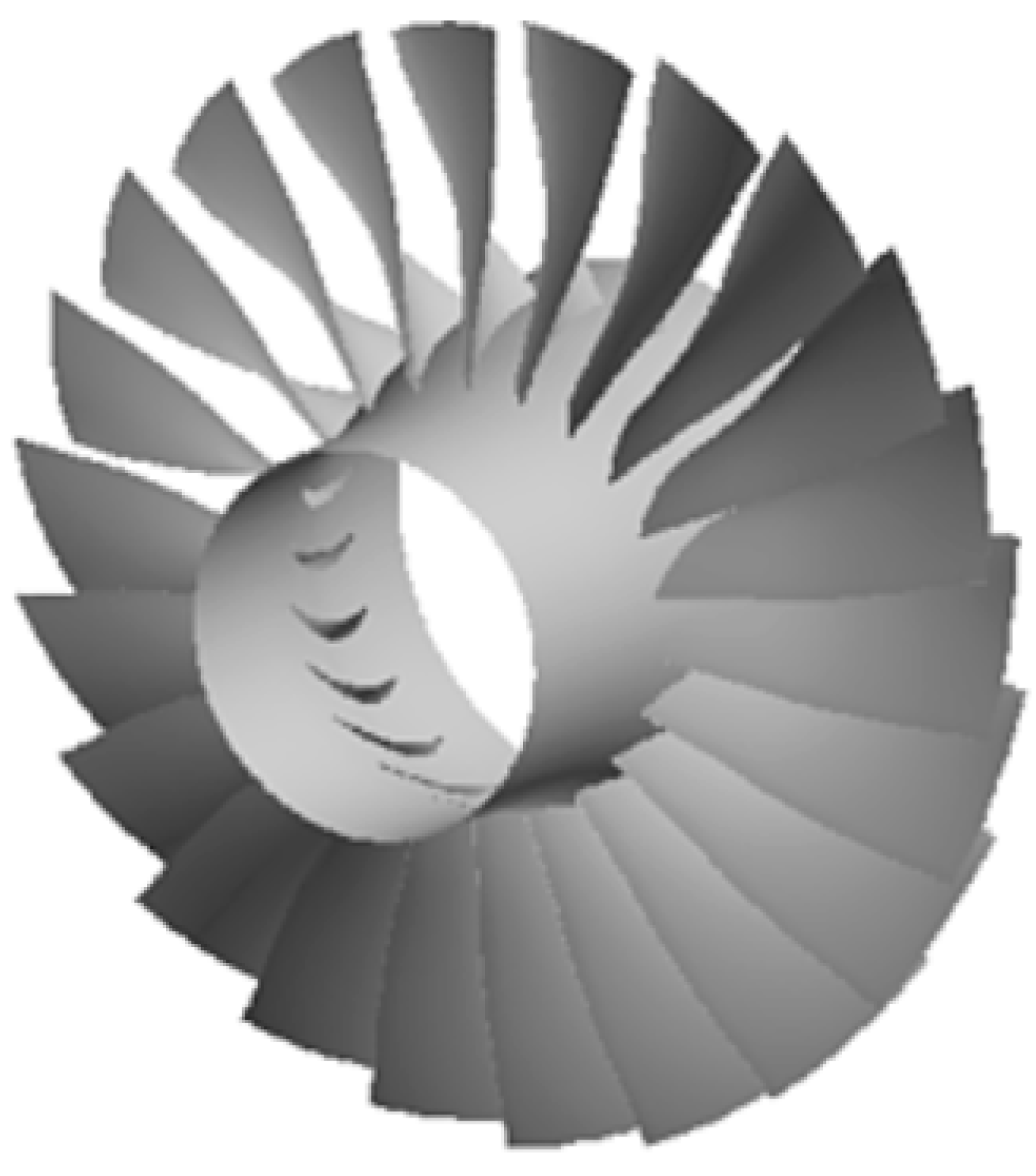
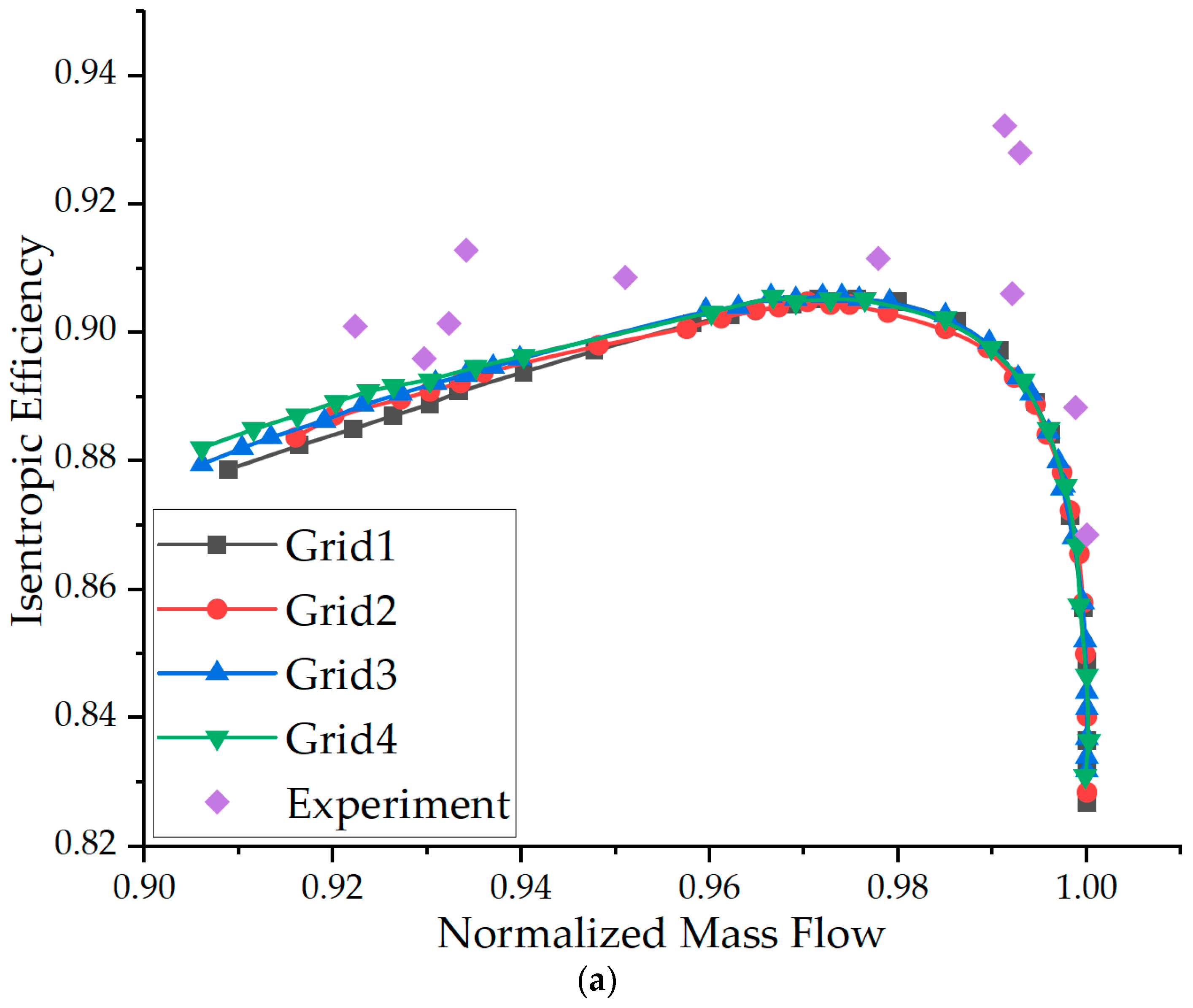
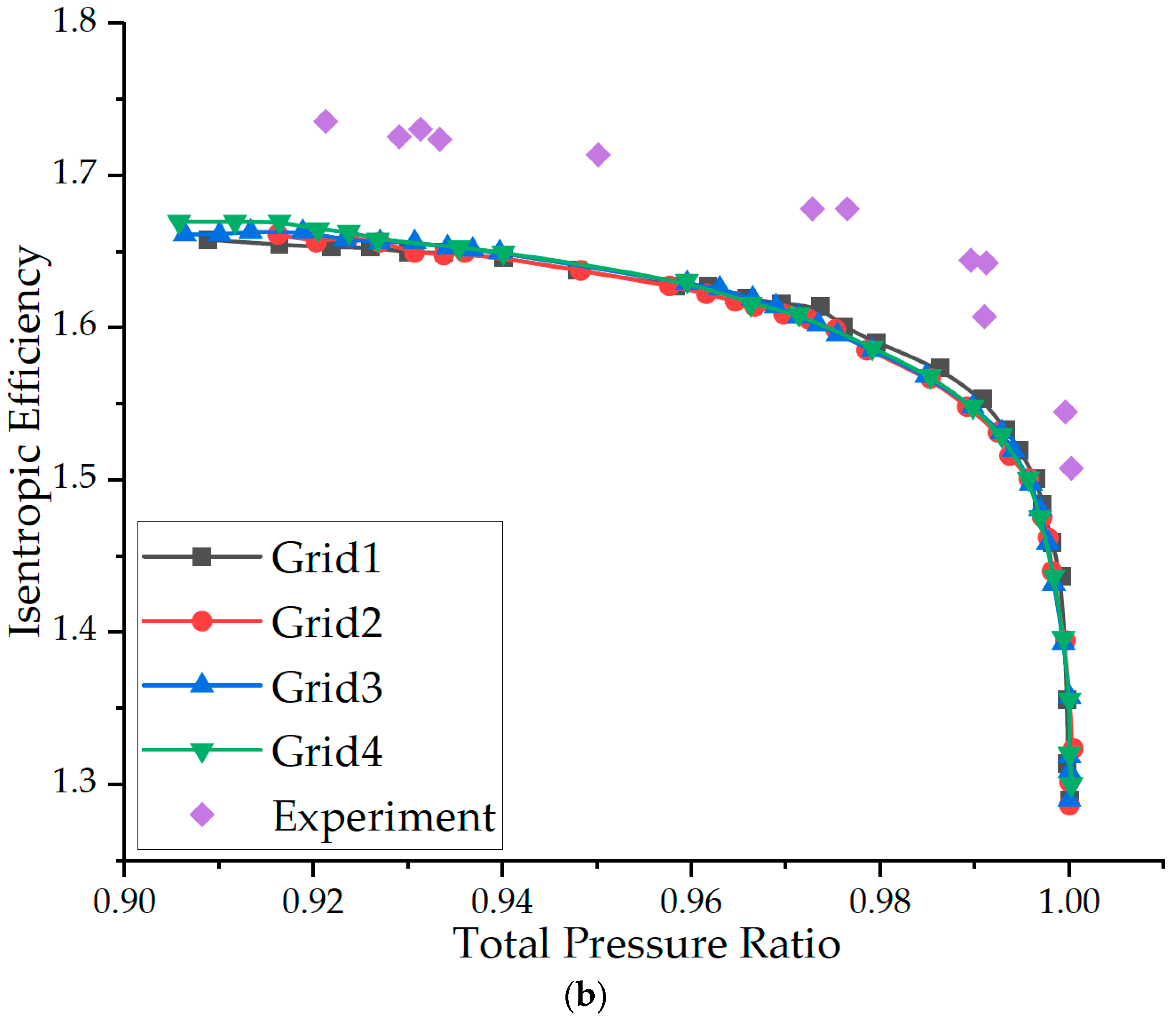
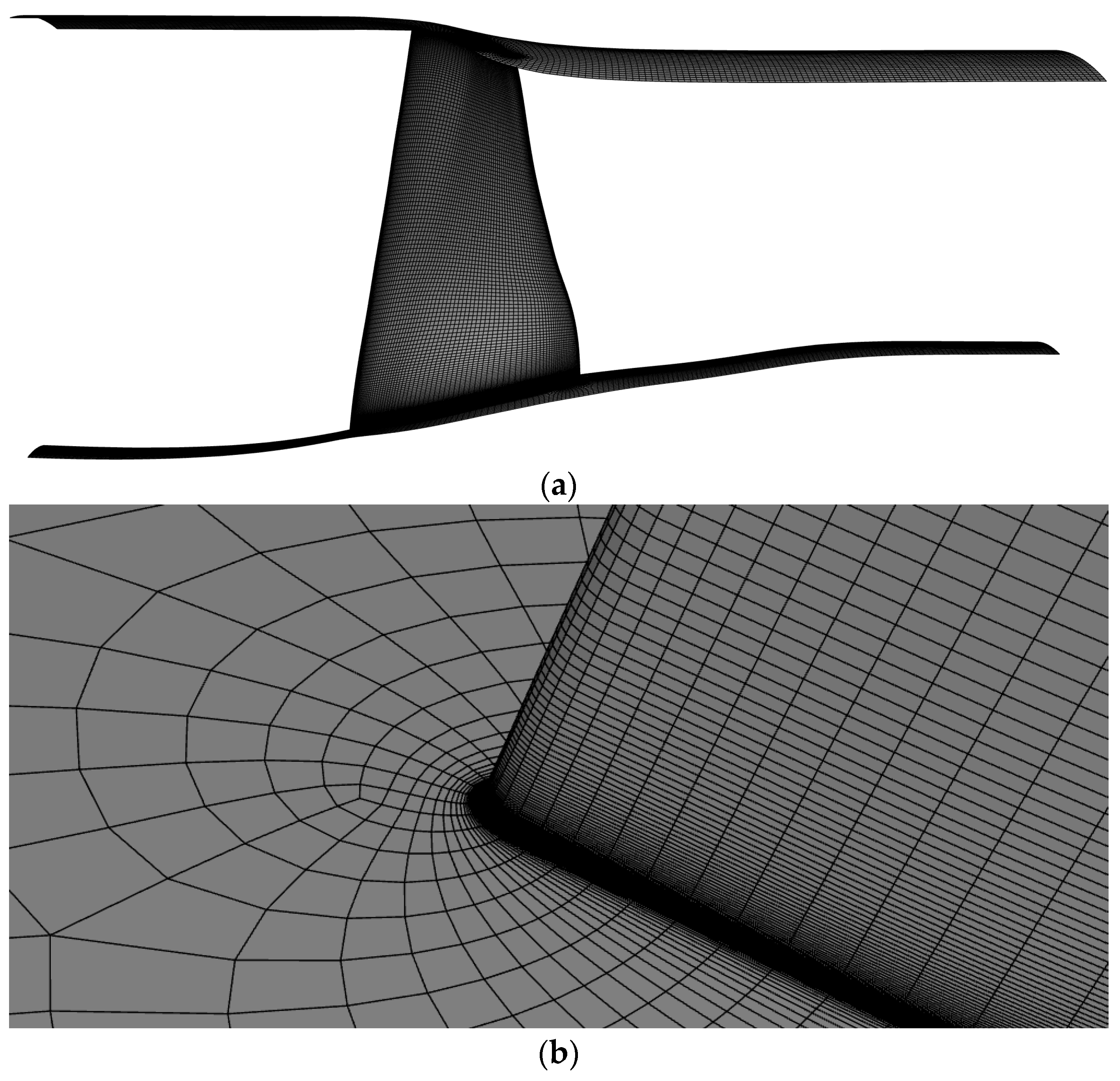

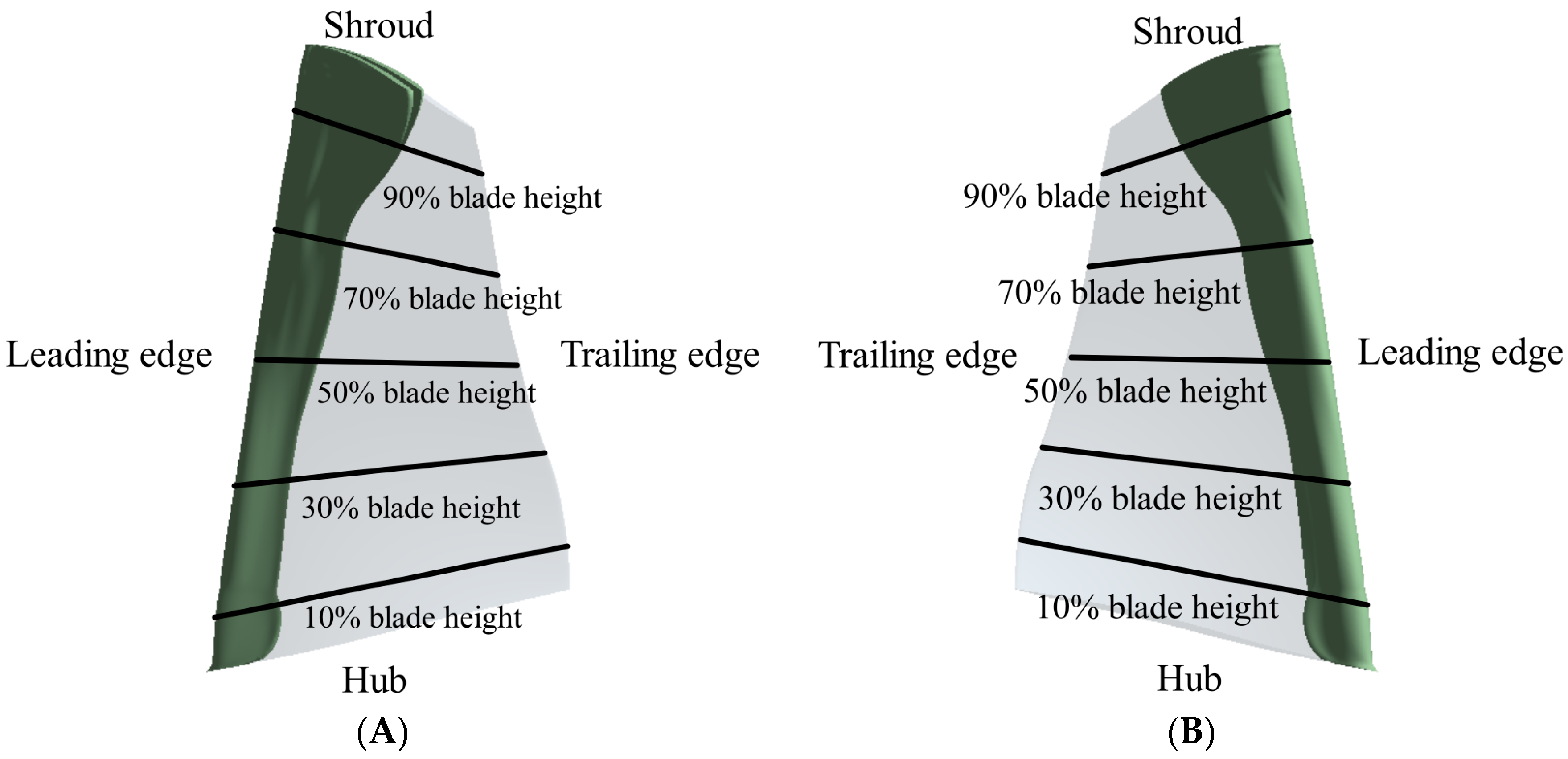

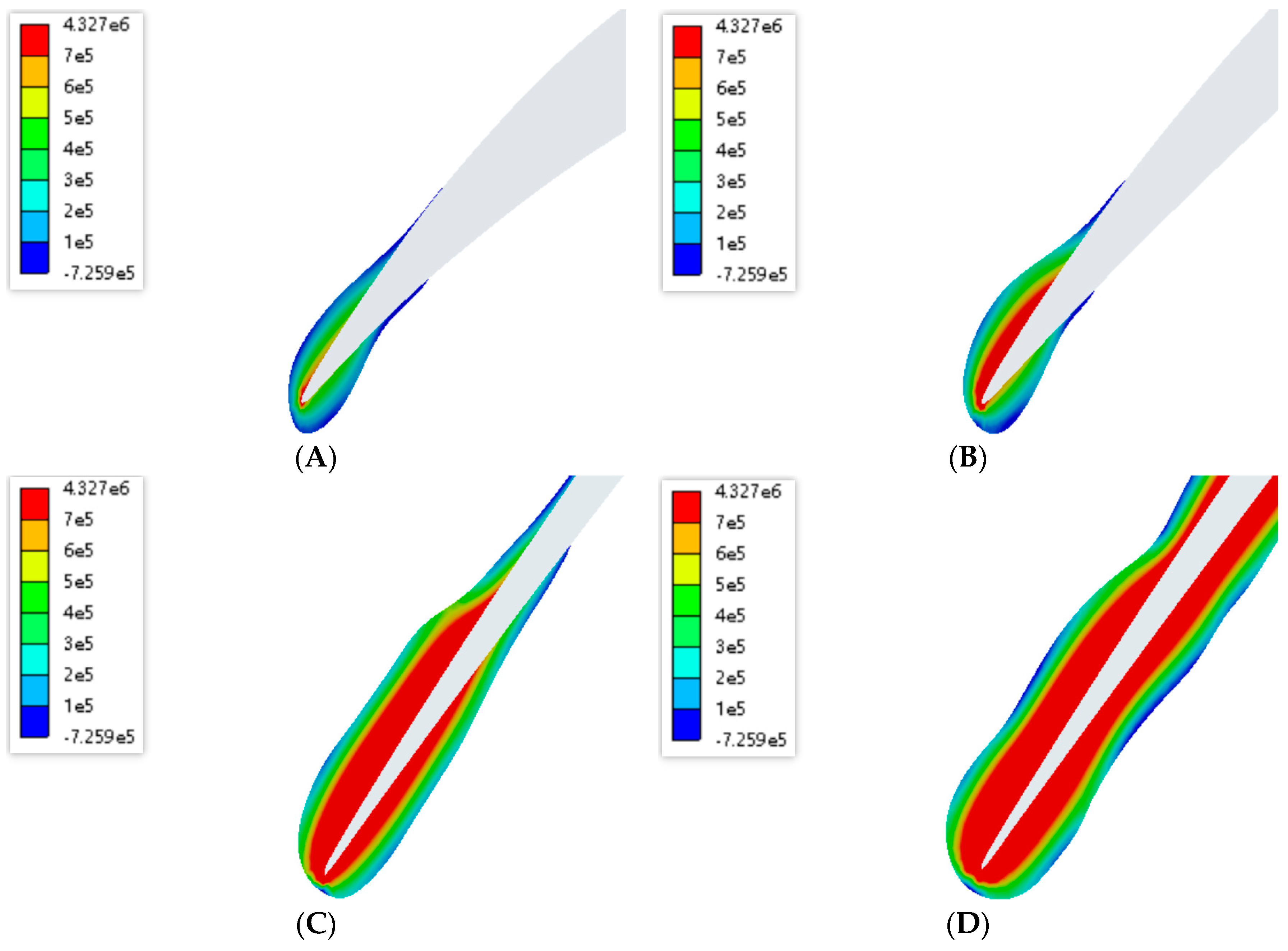
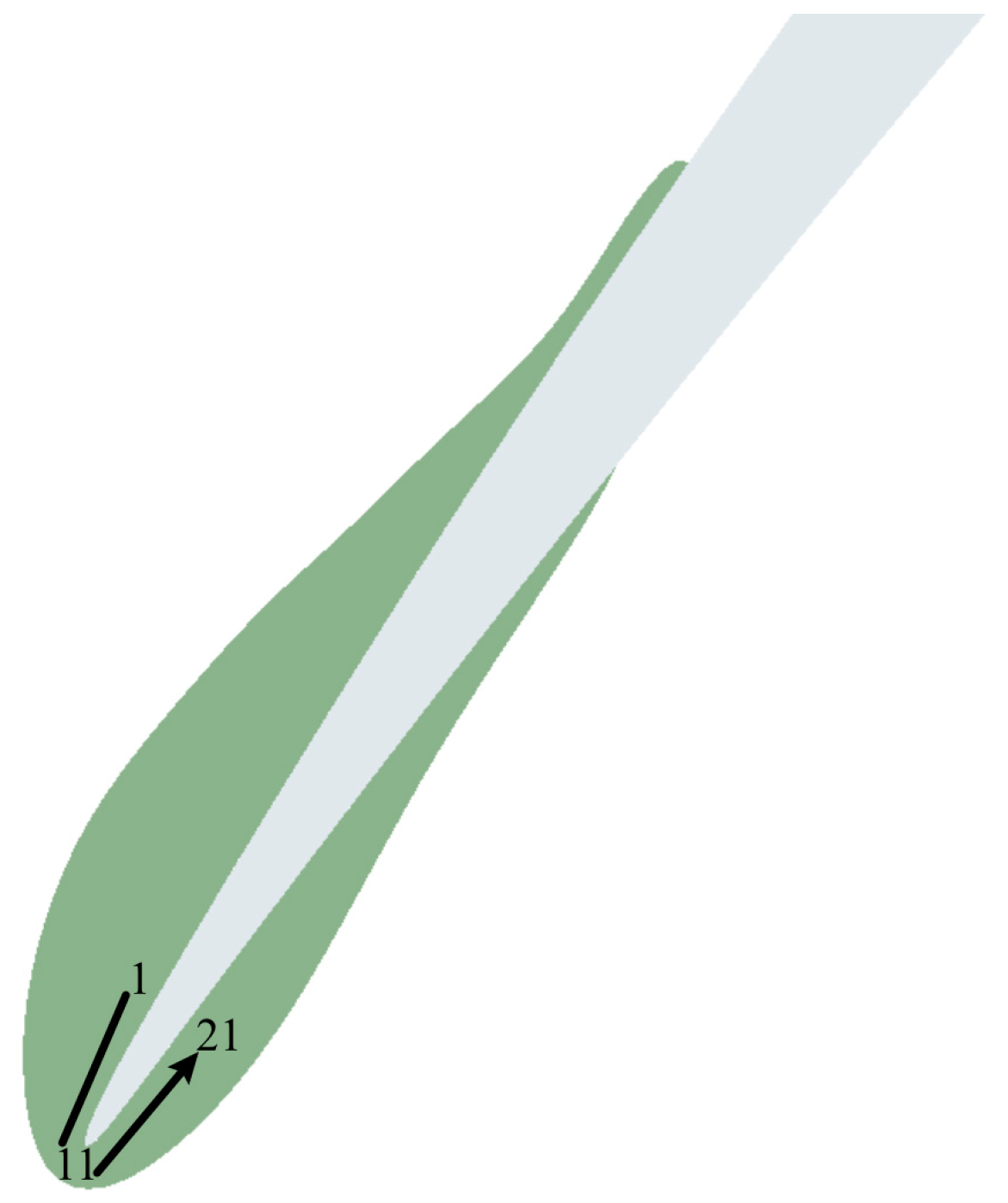
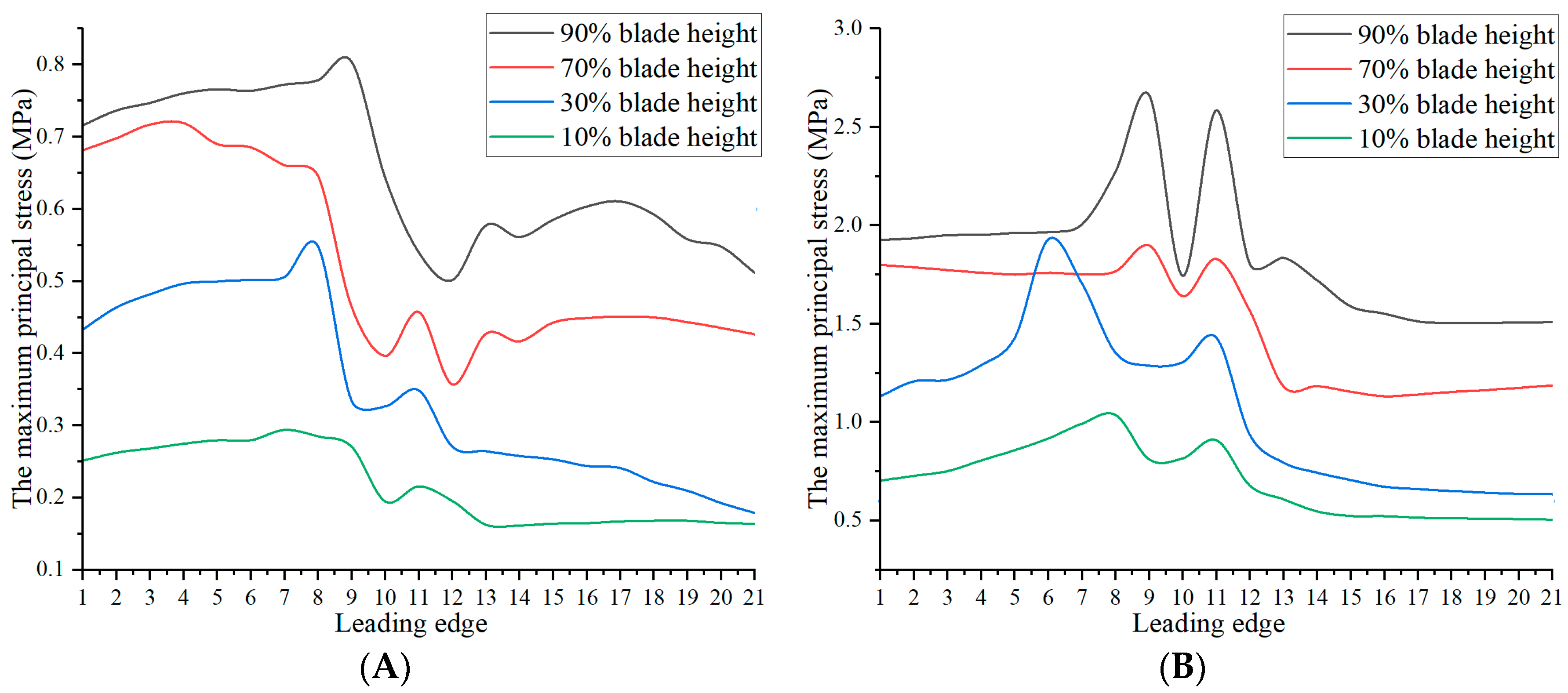
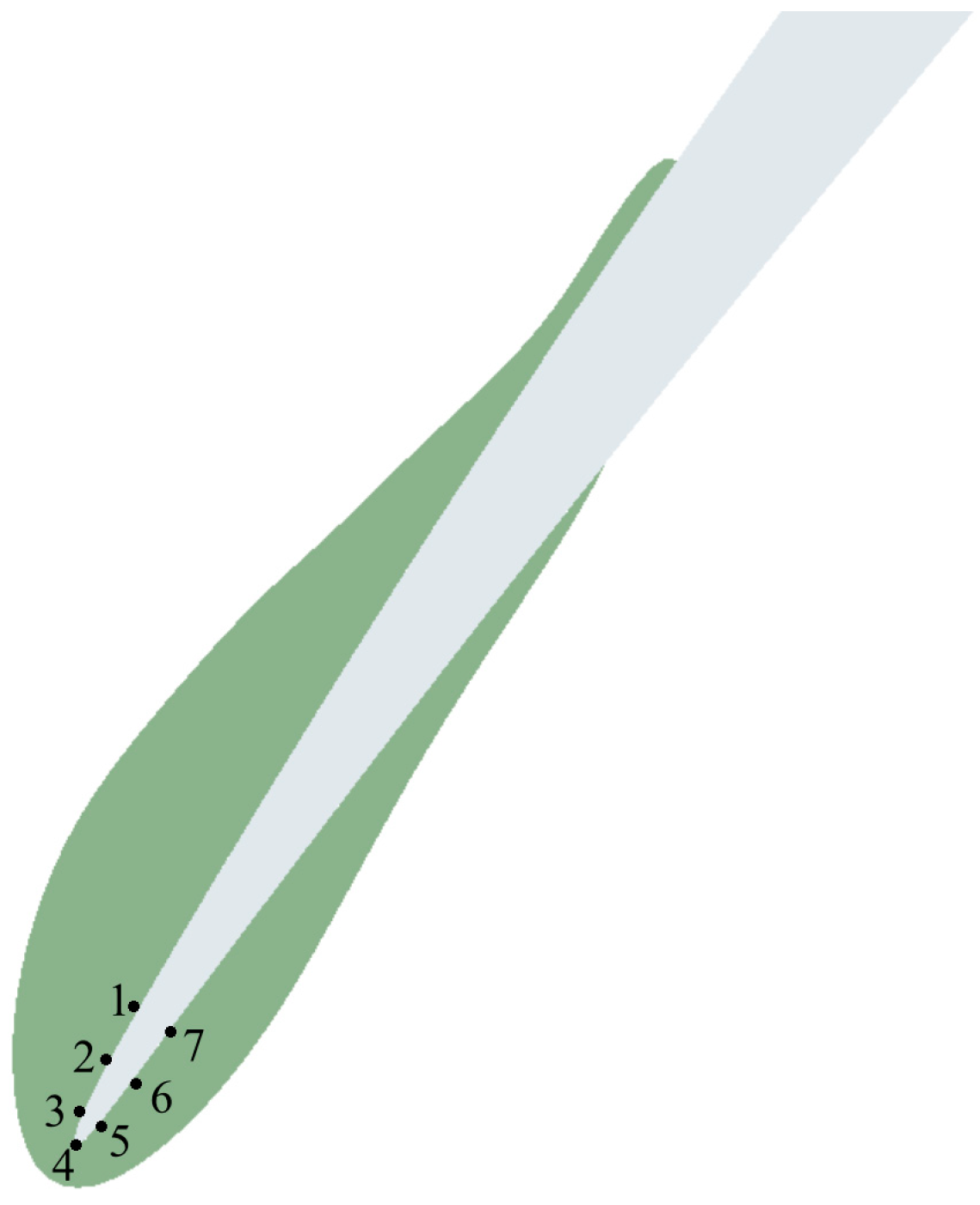
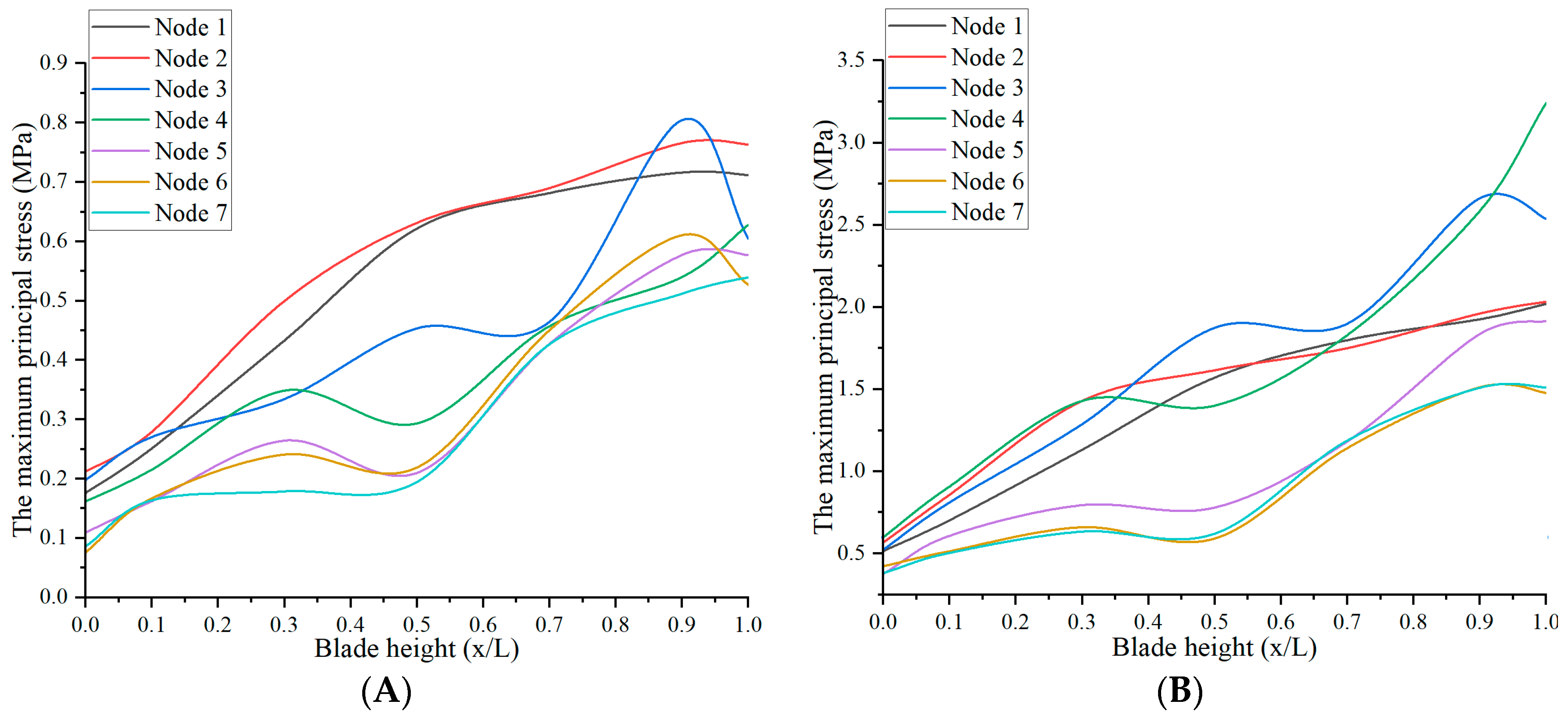
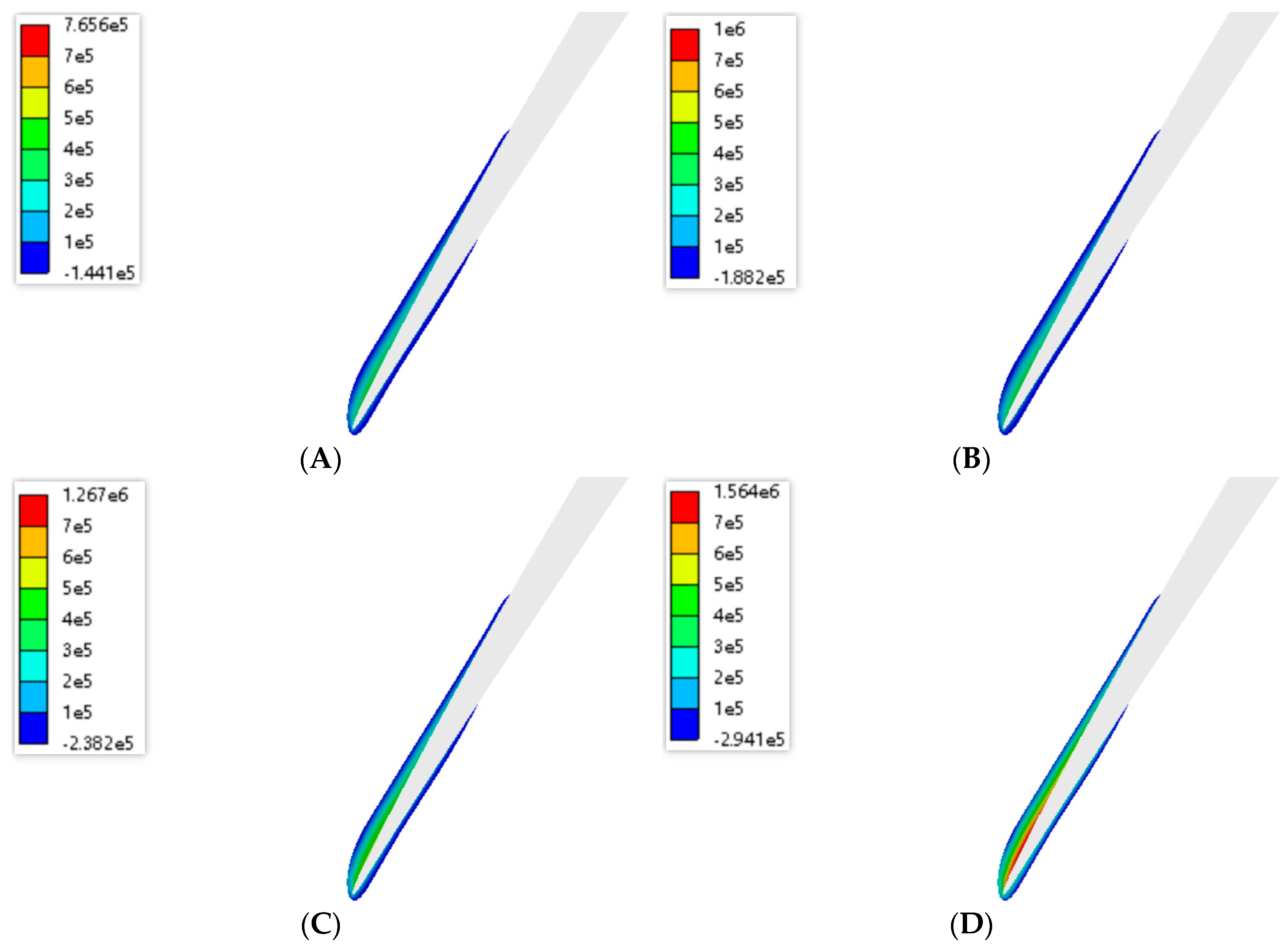
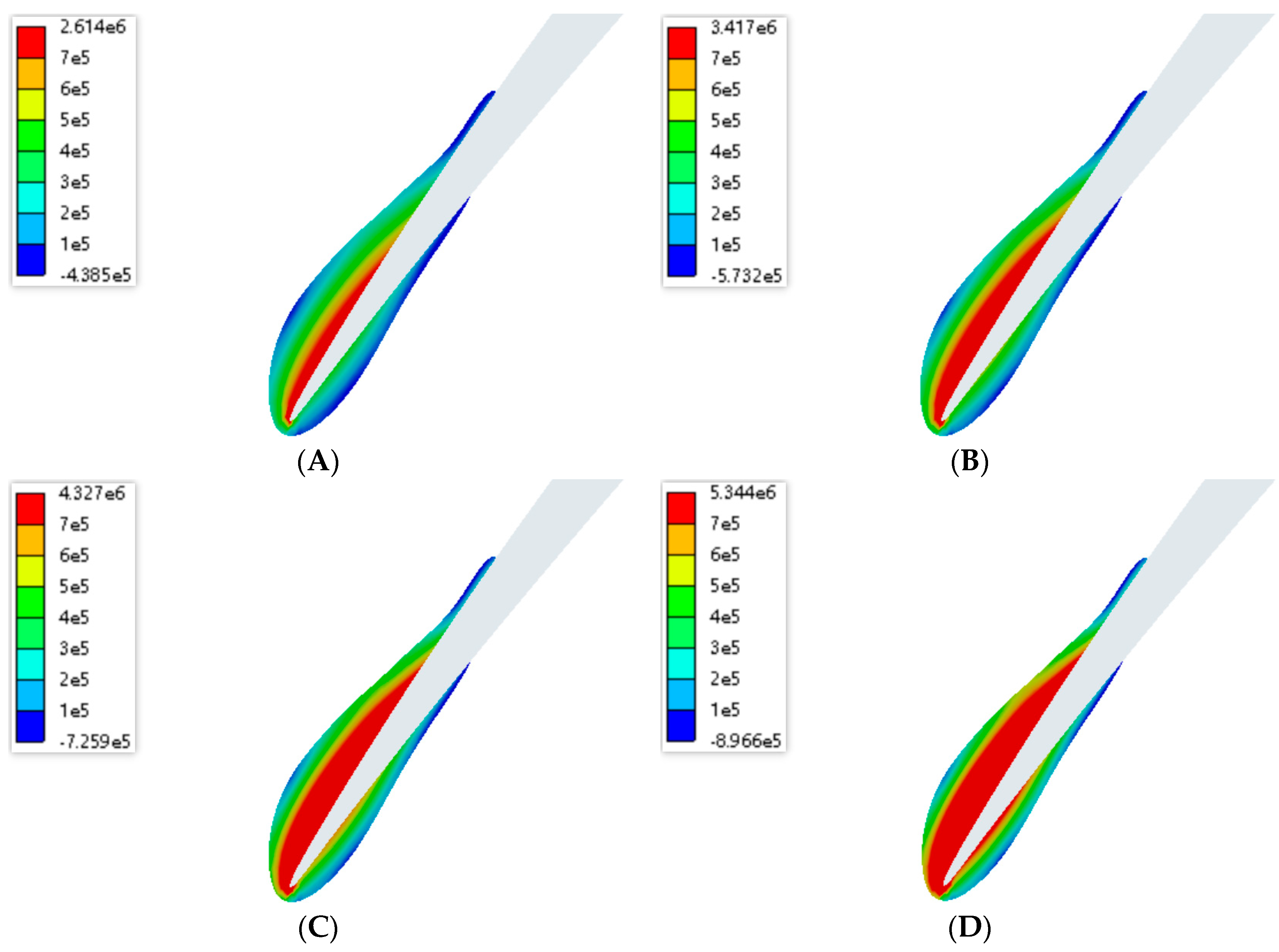
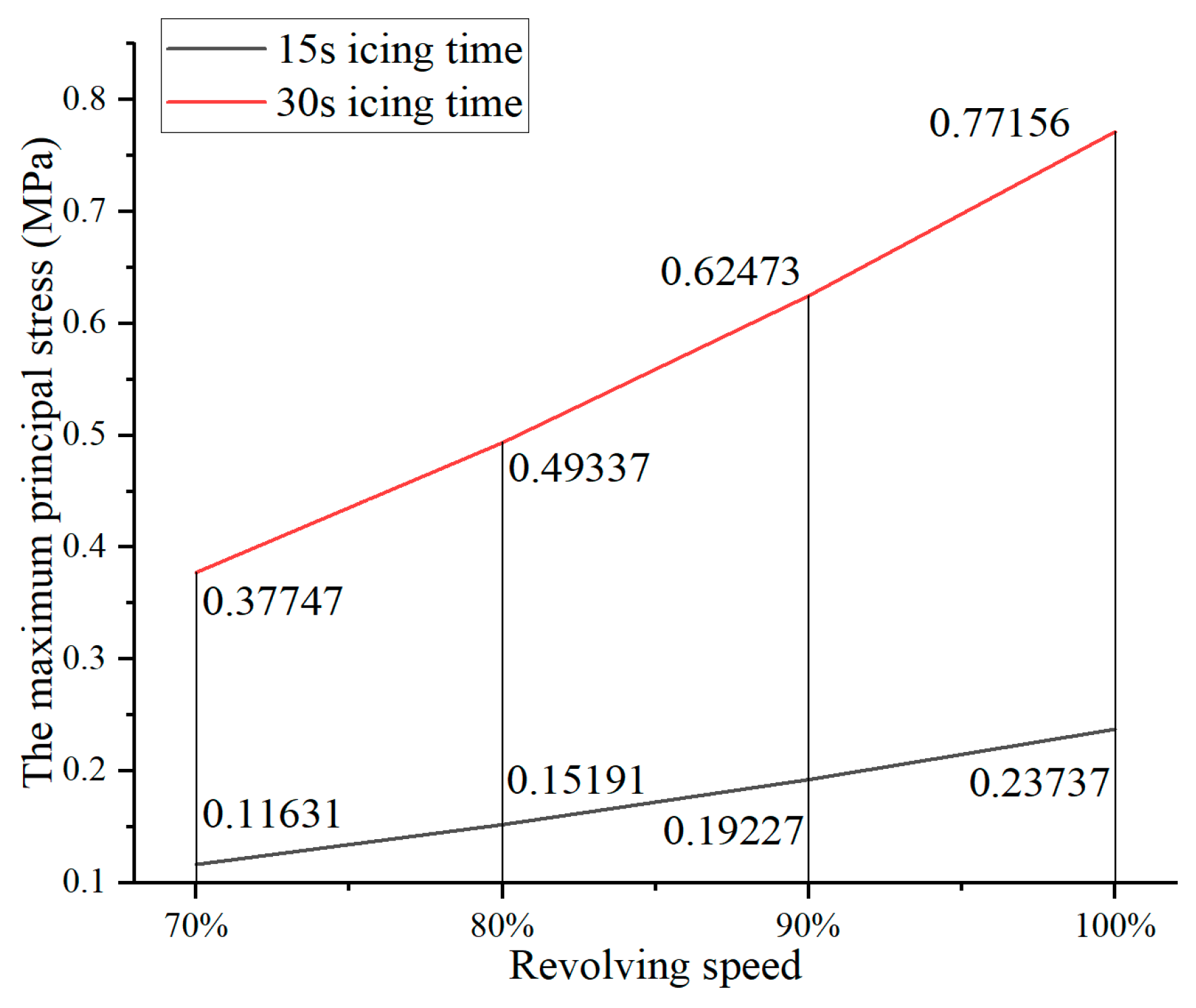
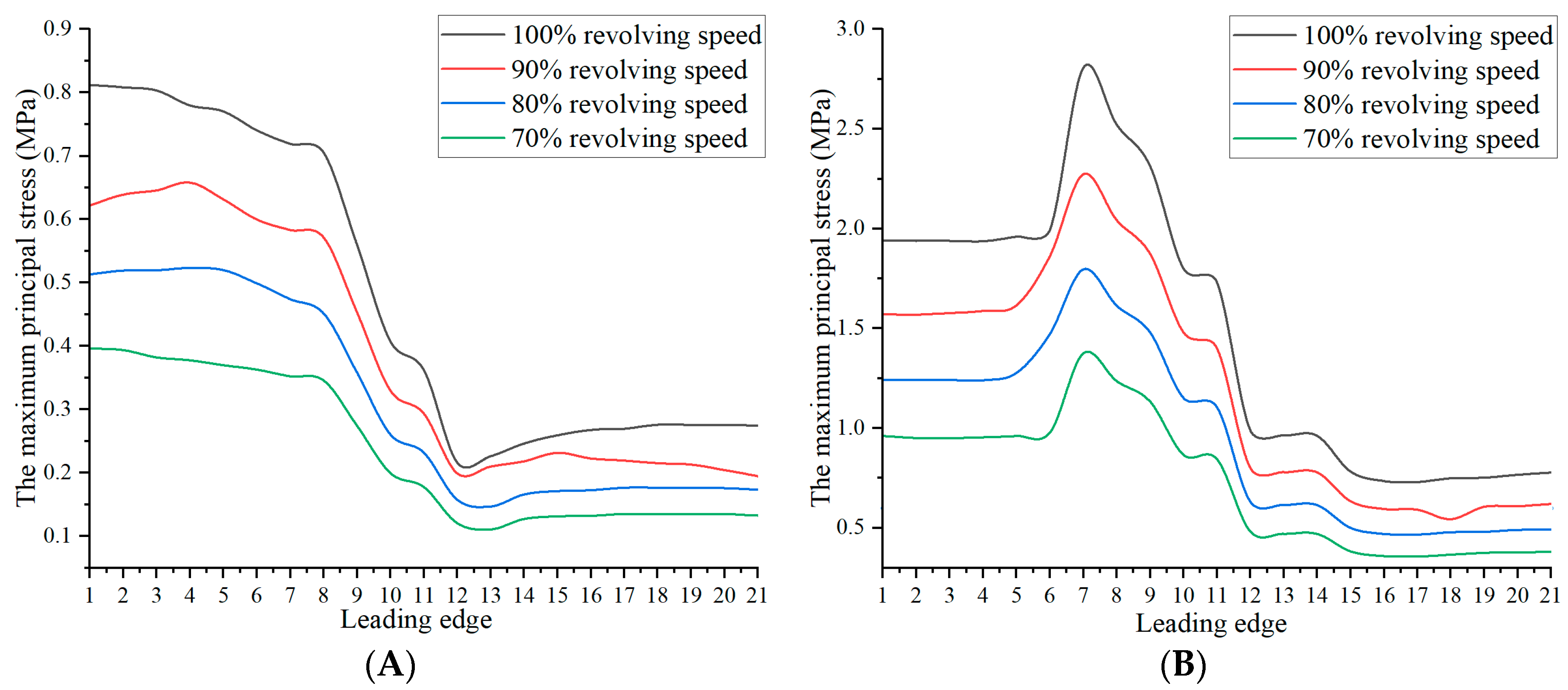
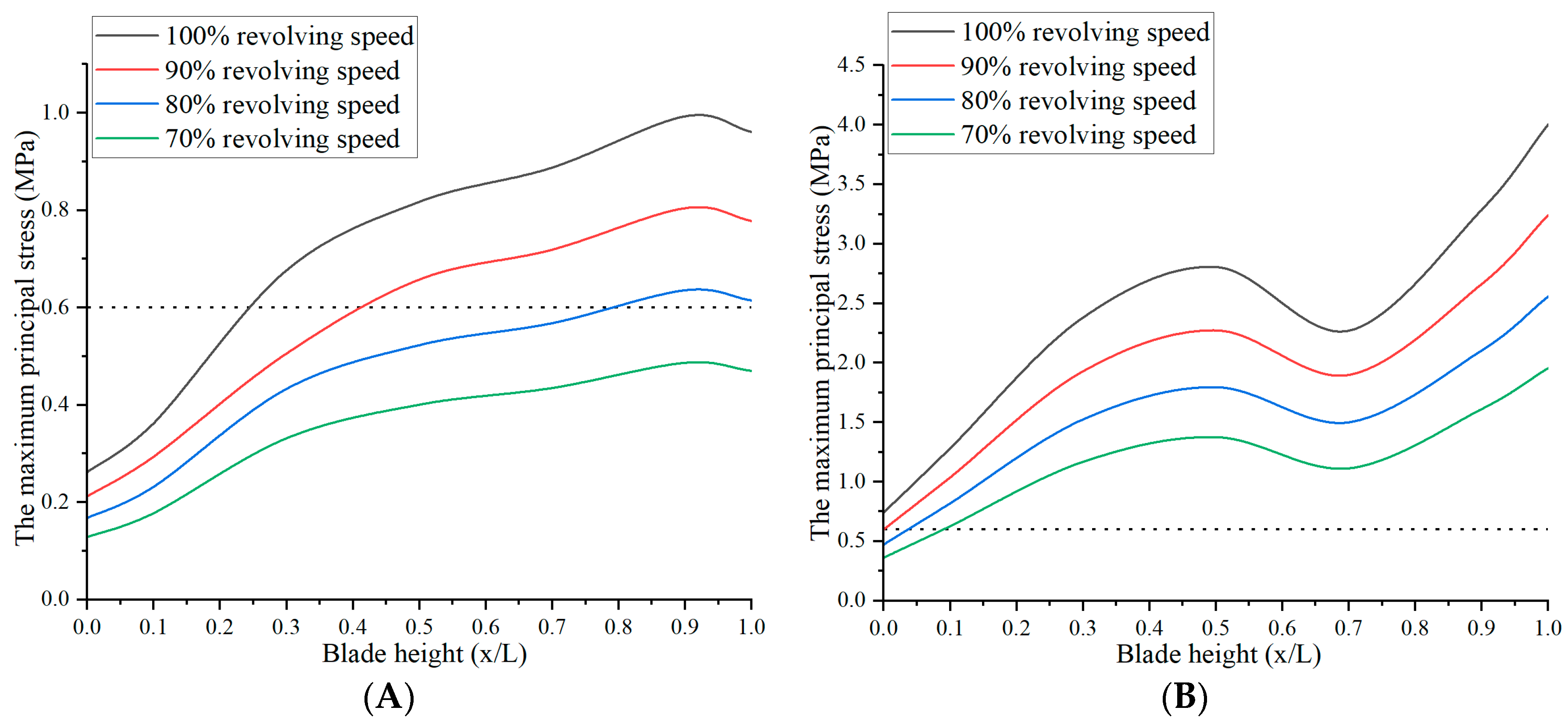
| LWC | MVD | Ambient Temperature | Barometric Altitude |
|---|---|---|---|
| 1 g/m3 | 35 μm | −11 °C | 1200 m |
| Properties | Value |
|---|---|
| Young’s modulus | 9.15 GPa |
| Poisson’s ratio | 0.32 |
| Ultimate tensile strength | 2.6 MPa |
| Ultimate compressive strength | 15 MPa |
| Density | 900 kg/m3 |
| Properties | Value |
|---|---|
| Young’s modulus | 69 GPa |
| Poisson’s ratio | 0.33 |
| Density | 2750 kg/m3 |
| Properties | Value |
|---|---|
| Maximum normal contact stress | 49,000 Pa |
| Critical contact gap at the moment of detachment | 1.0 × 10−9 m |
| Maximum equivalent tangential contact stress | 49,000 Pa |
| Critical tangential slip at the moment of detachment | 1.0 × 10−9 m |
| Normal cohesive stiffness | 0.3 × 10−3 N/m3 |
| Shear cohesive stiffness | 0.3 × 10−3 N/m3 |
| Normal mode fracture energy | 1 × 10−6 N/m |
| Tangential fracture energy | 2 × 10−6 N/m |
| Damping factor | 0.2 |
| Power exponent | 2 |
| LWC | MVD | Ambient Temperature | Pressure | Freestream Velocity | Angle of Attack | Icing Duration |
|---|---|---|---|---|---|---|
| 0.55 g/m3 | 20 μm | −26.1 °C | 101,325 Pa | 102.82 m/s | 4° | 360 s |
Disclaimer/Publisher’s Note: The statements, opinions and data contained in all publications are solely those of the individual author(s) and contributor(s) and not of MDPI and/or the editor(s). MDPI and/or the editor(s) disclaim responsibility for any injury to people or property resulting from any ideas, methods, instructions or products referred to in the content. |
© 2024 by the authors. Licensee MDPI, Basel, Switzerland. This article is an open access article distributed under the terms and conditions of the Creative Commons Attribution (CC BY) license (https://creativecommons.org/licenses/by/4.0/).
Share and Cite
Xu, Z.; Zhang, L.; Guo, H.; Liu, Z. Stress Analysis of Ice Layers on Fan Rotor Blades in Aeroengines. Aerospace 2024, 11, 814. https://doi.org/10.3390/aerospace11100814
Xu Z, Zhang L, Guo H, Liu Z. Stress Analysis of Ice Layers on Fan Rotor Blades in Aeroengines. Aerospace. 2024; 11(10):814. https://doi.org/10.3390/aerospace11100814
Chicago/Turabian StyleXu, Zhiyuan, Lifen Zhang, Hailong Guo, and Zhenxia Liu. 2024. "Stress Analysis of Ice Layers on Fan Rotor Blades in Aeroengines" Aerospace 11, no. 10: 814. https://doi.org/10.3390/aerospace11100814
APA StyleXu, Z., Zhang, L., Guo, H., & Liu, Z. (2024). Stress Analysis of Ice Layers on Fan Rotor Blades in Aeroengines. Aerospace, 11(10), 814. https://doi.org/10.3390/aerospace11100814





